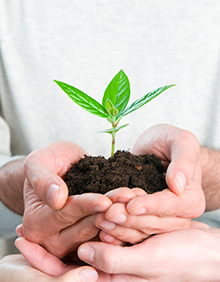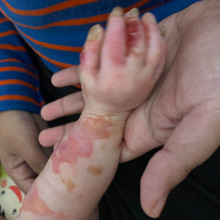- For Patients
- Best Practices
- Care of the newborn with blistered skin
Wound care
Wound care aims to promote healing, to reduce the risk of infection and to minimize pain. Dressings help to maintain a clean environment and covering the wounds will allow the baby to be held, promoting bonding.
read more
Preparation
Note that whilst a sterile technique may be possible in a hospital environment, at home it is neither necessary nor practical – the accepted standard for EB dressings is cleanliness.
read more
Bathing
Depending on conditions, it is usually not necessary to have a full body bath every day. Instead, it can be performed every other day or sometimes Monday/ Wednesday/ Friday.
read more
Removing previous dressings
It may be helpful to deal with one limb at a time. Babies tend to struggle/ kick out, trying to hold bare limbs will lead to injury and bleeding.
read more
Pain-free washing with saline.
From Debra NZ, using a solution that matches body salt concentrations causes less disruption to cells and less stinging. Body temperature saline is ideal.
read more
Drain blisters
Small blisters may be managed with a layer or ointment or dressing if protection from further trauma is needed.
read more
Cleanse skin/ wounds
A mild non-perfumed product such as Cetaphil® or Dove® is fine. Rinse with water/ saline afterwards. If necessary pat dry, but do not rub.
read more
Infected wounds
Poor nutrition and anaemia reduces the resistance to infections, whilst some patients with severe EB may also have immunological defects.
read more
Contact layer
This layer is important in that it covers and protects the wound, but then you should be able to easily and safely remove it without causing trauma.
read more
Nutrition
Calories are required for growth and development as well as wound healing. Lesions in and around the mouth may cause problems with feeding, in particular breast feeding.
read more
Common questions
Is EB contagious? Do I need to use sterile saline? What causes EB? Is there a cure for EB? Is EB Inherited?
read more
Other information
EB wound care videos – Stanford
Lorraine Spaulding basic are tips pdf
Debra international guidelines and from UK page read more
Lorraine Spaulding basic are tips pdf
Debra international guidelines and from UK page read more
 Stay in Touch
Stay in Touch Wudy’s story
Wudy’s story(translated by Google Translate)
Married for seven years, long-awaited first-time mother when I thought I was happiest... read more
